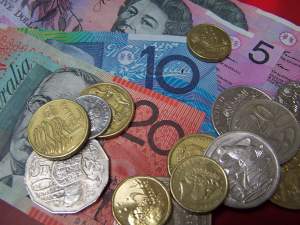Local Currency in Australia
Dollars? Rupees? Yuan? Baht? Riyals? Euros? Pounds?
What is your local currency called and what is it worth?
The local currency in Australia is called “Australian Dollars”, which are used all throughout Australia. Aussie Dollars are issued in $500, $200, $100, $50, $20, $10, $5 notes, and the coins (or “cents”) are issued in $2, $1, 50c, 20c, 10c, and 5c denominations. 100 cents equal $1.00.
For a current exchange rate visit xe.com
Accessing your money abroad:
We recommend using your banking card (ATM/debit) from your U.S. bank. Using ATM cards enables you to access your own personal bank account from any ATM machine around the world. The primary advantages of getting money from an ATM are 24-hour access and preferential exchange rates.
IMPORTANT INFORMATION ABOUT USING YOUR DEBIT CARD ABROAD:
Check with your bank to make sure you can use your card overseas, and to inform them that you will be living abroad. Give them your dates, and all the countries you anticipate traveling to. If your bank is a large, nationwide chain, you can often submit this information through your the bank’s online website. It is not uncommon to be cut off from your bank account after using your card abroad, even after giving them forewarning. If this happens, don’t panic! Banks do this to protect their clients, and we should be grateful! If this happens to you, you just need to contact your bank to assure them that you are in possession of your card and that you need to have access to your account while you are abroad. If you have a shared account with a family member and their name is also on the account, sometimes it’s helpful to ask them to call the bank for you considering the time difference between countries.
In order to withdraw cash from an ATM using a debit or credit card, you must have a 4-digit pin. While you’re most likely very familiar with your debit PIN, you might not know a PIN for your credit card. Be sure to ask before you travel as banks will not release this information over the phone, via text, through an email or in any other way than to mail your PIN to the mailing address associated with your account.
Many ATMs in Australia only accept debit/credit cards that have the chip and pin system in the card. For many banks, you can request a chip and pin card to use overseas. Below you will see an example of a chip and pin card. These cards require a pin instead of a signature.
It is a good idea to have both options available – an ATM card and a credit card – just in case of an emergency. When you use your bank card, the ATM machine will automatically convert the money into the local currency for you.
BEWARE OF FEES! Make sure to ask your bank about their international transaction fees as they may charge you anywhere from $5.00 to $7.00 per transaction, and that adds up! Many large U.S. banks have affiliations with international banks. Ask your bank if they have any affiliations with banks in Australia because you may be able to avoid ATM transaction fees. While you may not be able to avoid fees entirely, try to limit the number of ATM transactions you are making to cut down on the flat rate fee many machines charge for each withdrawal.



